“So many riders think only about the physical aspects of training and I hear too many times from riders, ‘well my horse just needs to get stronger’. I ask myself constantly what about the mental part? My idea is that the physical part is 25 per cent and the mental part 75 per cent and I find myself asking each and every day, did my horse really understand what I was asking for?”
For many of you, Steffen Peters – Olympic bronze medallist and winner of all three Grand Prix classes at the World Equestrian Festival, in Aachen 2009 (a world first) on Ravel, the beautiful 14-year-old KWPN gelding – needs no further introduction. He is currently the highest ranked dressage rider in the USA and has recently returned from the London Olympics having previously represented the USA in Beijing and Atlanta.
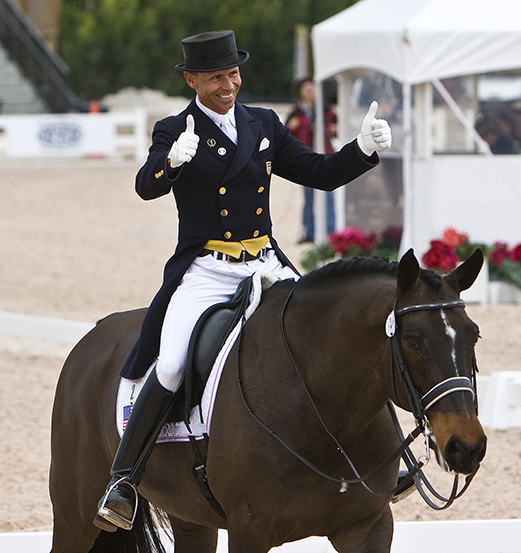
Photo: Kenneth Braddick
Steffen has won fans far and wide due to his kind and fair training methods and quiet, yet engaging, personality and ready smile.
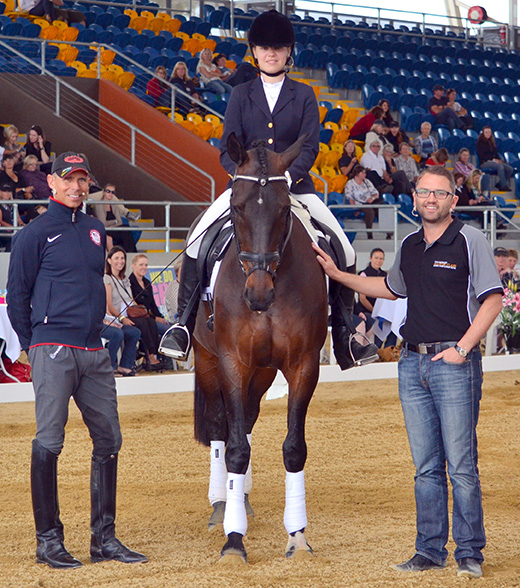
Guinea pig no. 1, Emma Moore and Harlem with Steffen and Jonah
Story continues below the advertisement
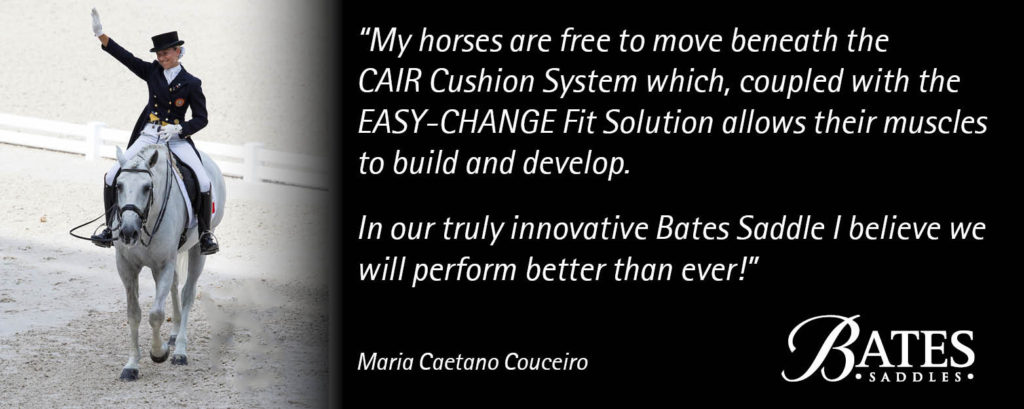
For those of you not already familiar with Jonah Oliver, he is one of Australia’s leading performance psychologists and, like Steffen, has recently returned from the London Olympics, where he coached the Australian Men’s Water Polo Team. Jonah combines both sports psychology and neuroscience in his simple yet effective approach to performance coaching. His style, although entertaining, is somewhat confronting and challenges individuals to examine the deeper motives behind their beliefs and actions.
The concept for the Ultimate Master Class was developed by Queensland dressage coach Nicole Magoffin when she was in San Diego training with Steffen during 2010, and felt Australians needed to be exposed to his methods of engaging the horse and rider’s brain and mental state, as much as the physical. Nicole, having previously met Jonah in 2006, through a friend studying psychology, was familiar with his sports coaching methods and the seed of an idea was born to bring Steffen to Australia and run a combined dressage master class. She and her business partner, Tricia Osborne established Equestrian Events International to facilitate raising the standards of education and coaching of dressage in Australia. Thanks to an enormous amount of work and generous sponsorship from Mitavite, Horseland, and Pit Ponies Pty Ltd, this bright idea has now become a commercial reality. With sponsorship secured for another two years it looks as though it will become an annual event, possibly held in Melbourne or Sydney next year. Steffen has indicated that he would be very interested in helping to take this event in the USA as he told the audience:
“This is exactly the kind of training we need in the US and I just don’t know why nobody has thought to do it before.”
It is rare to be involved with such high calibre horses, riders, trainers, coaches, owners and sponsors unified in a collaborative atmosphere of education and advancement of ideas that are challenging many long held beliefs on accepted methods of training dressage horses.
Nicole Magoffin with her two star presenters
That may sound like a big call – and it is. The Ultimate Master Class promised a lot but I believe they delivered in four key ways:
One: The desire to actively move away from the “prescription dressage clinic” – where horse and rider work for several days behind the scenes prior to the clinic to bring forth picture-perfect dressage, on now much improved horse and rider combinations – to the much more interesting reality that involves addressing real time training problems, physical and mental, as they unfold before the audience. The horse and rider combinations were introduced to the coaches for the first time in the arena in front of the audience as part of a deliberate strategy to actively duplicate the “real life” training situations that beset horses and riders.
Two: By introducing the unique combination of dressage coach and sports psychologist, working together to develop and implement creative solutions to everyday training problems. Steffen and Jonah found much common ground through their similar philosophies towards coaching and quickly developed a meaningful, and quite often entertaining, rapport where they bounced thoughts and ideas off each other with input from the rider. This strategy proved particularly meaningful for audience and riders alike. Horse/rider technical issues and rider-created “mental” issues were able to be addressed simultaneously. This proved both revealing and enlightening as many so-called horse issues were actually the construct of rider mental issues.
Three: Horse and rider combinations were specifically chosen to represent ‘typical’ examples of combinations moving through the grades from pre-elementary through to Grand Prix, including young and novice horses, therefore representative of the majority of riders. This is in stark contrast to most clinics, which only tend to show highly trained horses and riders. All the riders were fitted with microphone headsets and a free and frank exchange of ideas with both coaches ensued. The riders were actively encouraged to question instruction for added clarity and give voice to both their fears and frustrations. This dialogue, often humorous, greatly facilitated the learning experience for the riders and the audience were better able to understand the ‘on horse’ experience.
Four: The three day clinic involved a final ‘competition day’ for the horse and rider combinations to actually ride a competition dressage test, appropriate for their training level. This was judged in “real time” by an A grade judge.
Story continues below the advertisement
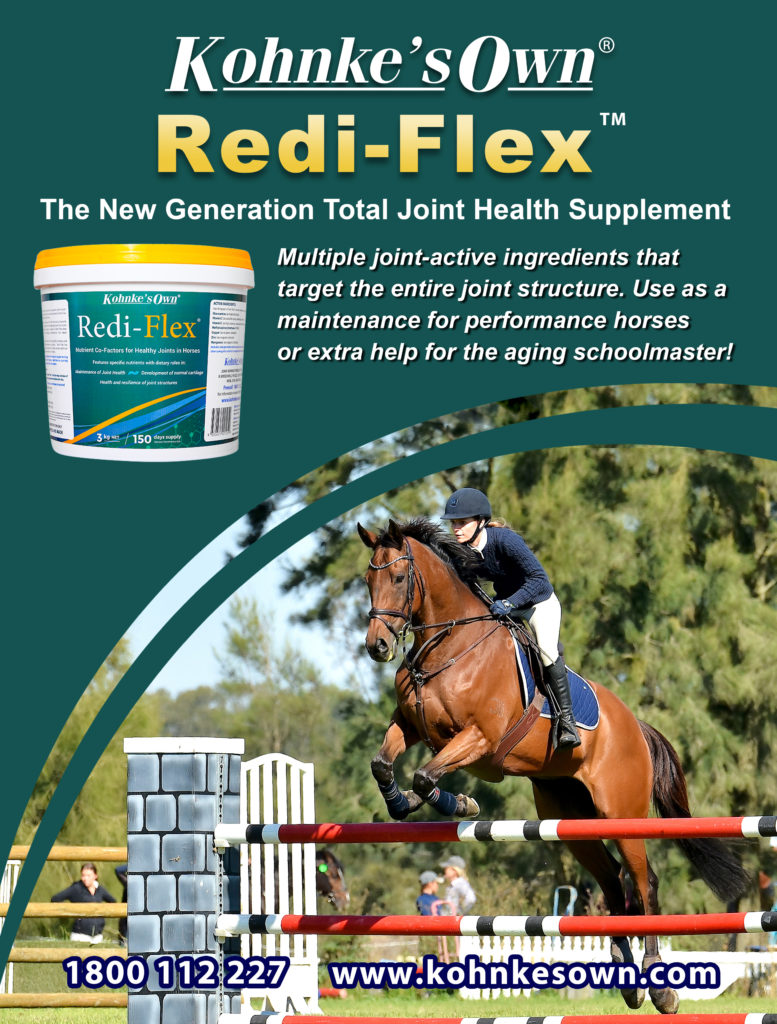
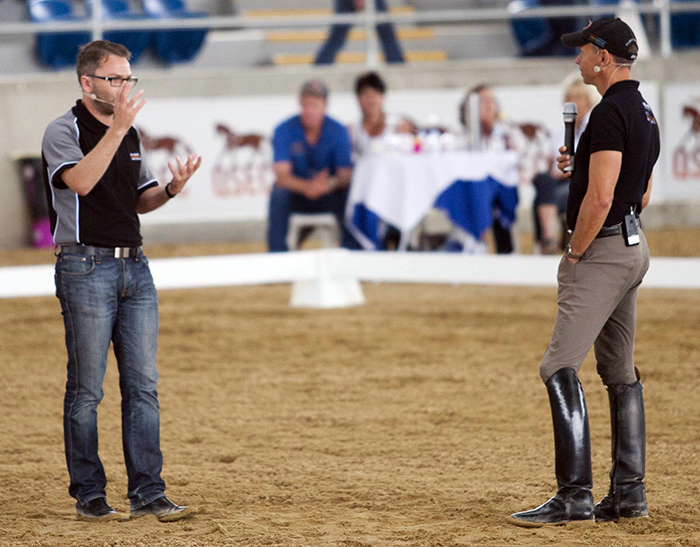
Steffen and Jonah on Coaching
Jonah – “Steffen, what are some of the classic errors you see coaches making, trying to do the right thing but often interfering with the learning process?”
Steffen – “There is so much surface training going on, there is so much over-coaching going on… the bottom line is that sometimes the coach tries too hard. If there is someone constantly talking, it can actually be counterproductive to learning, there is too much for the brain to absorb. But (the coach) gets a pay cheque so they gotta deliver and they keep talking, it can simply be overwhelming. I want to prepare a rider to go to a show not needing a riding lesson anymore, just concentrate on a few detailed productive words. I also don’t like coaches that, warming up a rider to go into the show ring say, ‘ok lets step it up a little bit, dig a little deeper’. I really believe that you should wait until you are ready, get into a routine and take that routine to the show. I think the show itself brings out enough adrenaline that you naturally try a little bit harder, but if someone needs to tell you that, I’m not sure it’s the right thing.”
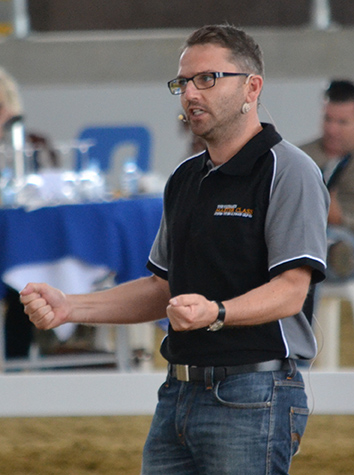
Jonah – “You captured that very well. Coaches have to resist the pressure to over-coach and need to let their students experientially learn, solve their own problems, and learn from the experience as a part of the coaching process.”
Story continues below the advertisement
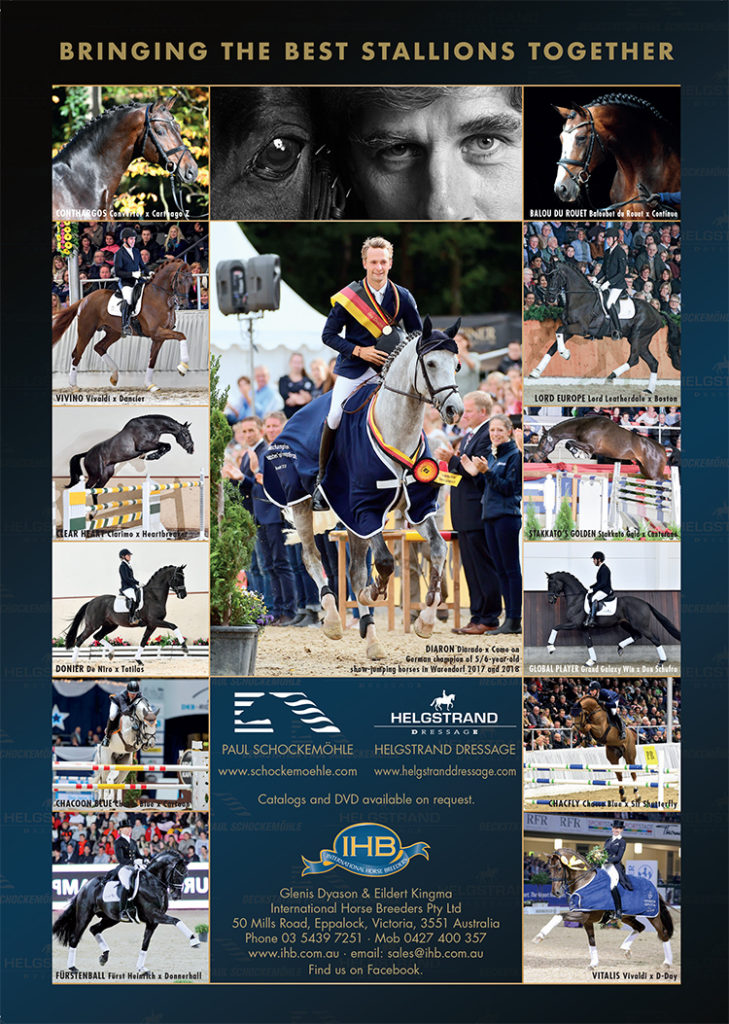
The Horses and Riders
The Ultimate Master Class carefully selected horse and rider combinations to represent the different training levels that riders must work through as they progress through the grades. THM is going to showcase a horse and rider combination each issue as part of a seven issue series, working progressively through the Classical Training Scale with each combination:
At the end of our training series we will be catching with all the riders showcased and will present updates of their progress implementing the new ideas that they took away from the master class.
So what is the Training Scale?
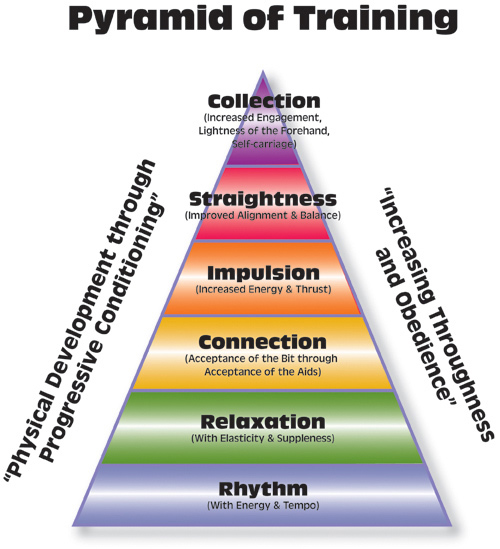
The dressage training scale is based on the German principle of classical riding where each property of the scale acts as a building block on which the next level can be developed. Often problems in training are solved by going back and re-establishing the basic foundations, rhythm and energy followed by suppleness.
Story continues below the advertisement
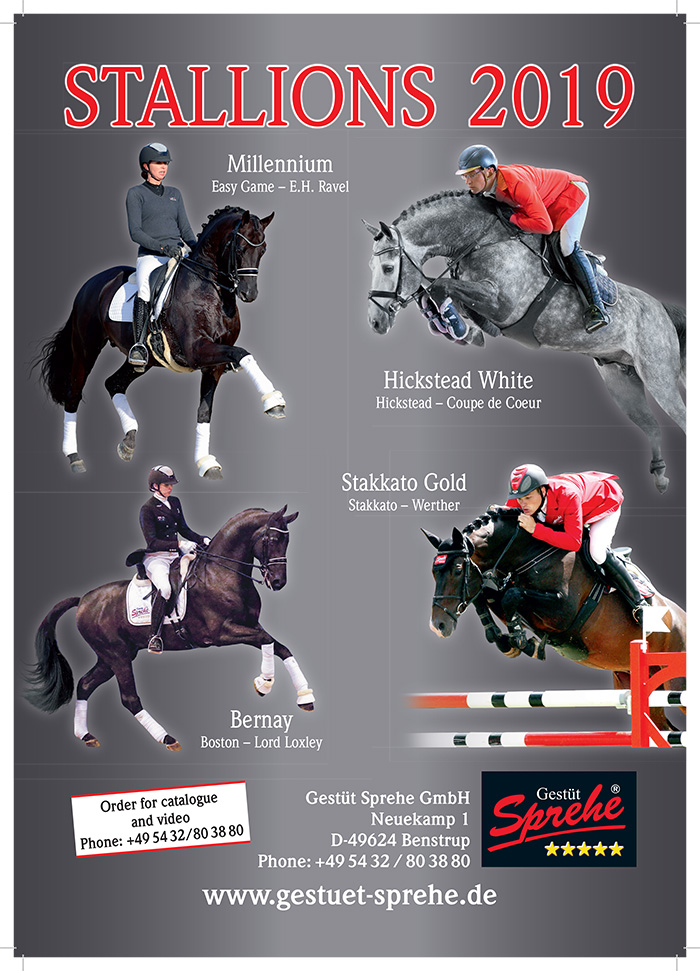
Step One: Rhythm and Energy
The first horse and rider combination was Emma Moore, a year 12 student and her 10-year-old Warmblood/Arab/Standard-bred cross – Anjarro Stud Harlem (Harlem). Harlem was bred to be a showjumper and is now being trained in dressage. Like the majority of riders Emma was looking to achieve a more effective connection with her horse. Emma felt her main issues were; “concerned with collection, maintaining a soft, light, and comfortable contact throughout the paces without the struggles of becoming heavy or on the forehand, resistant (mostly through a locking in the jaw), or otherwise unbalanced.”
On entering the arena Steffen introduced himself to Emma and asked her to quietly ride around while outlining to him (and the audience) a brief history of the horse, her expectations for the next year for the horse and any current training issues that she would like to work on – a format each rider combination followed in turn. Although understandably nervous, Emma explained her current issues and asked for Steffen’s opinion. It turns out that Steffen, and Harlem for that matter, had slightly different opinions on what the “main issues” were… as we all were to find out!
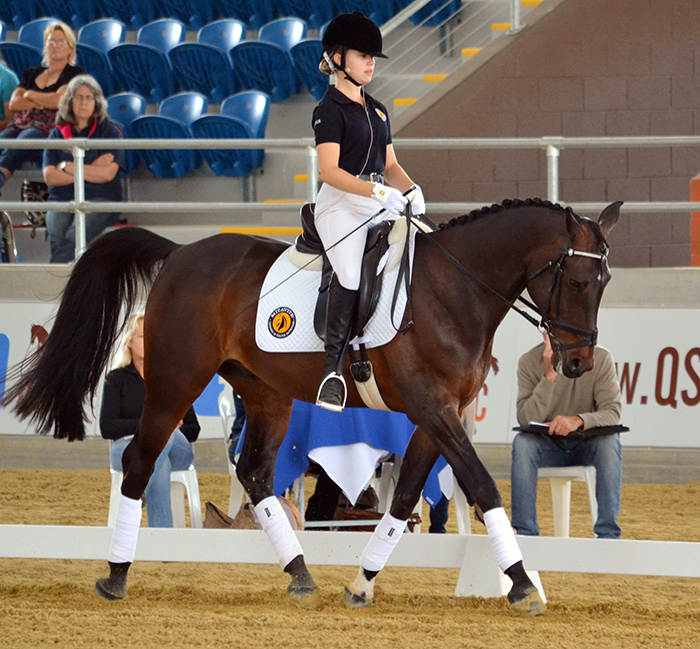
Emma Moore riding Harlem – pretty picture but lacking energy and ‘forward’
Steffen: “Ok Emma, I like to keep it simple for example when we talk about suppleness, bending, the willingness to move forward, all the things that make our horses more rideable, I like to keep it very simple. I ask myself – even though I can feel certain issues in the horse’s back, in the horse’s mouth, maybe even in the hind leg – what about my aids? How is my horse answering and responding to my aids? So I would simply like to start right now by asking you, how do you think your horse is responding to the leg?”
Emma: “Well he is not exactly listening to my leg. In fact, he is a little more relaxed in here than I thought he would be.”
Steffen: “Right, and our horses can trick us a bit into thinking that we need to constantly support them with the leg, which can then make them fairly numb to the aid. So we really want to go in and make an impact, make a difference with the aids. When you close your legs and I want to be very straightforward about this, I like to think of the leg aid as ‘having the pressure of a wet towel lying on the horse’s back’ – that to me is enough of an aid to have your horse move forward. If it takes more than this, then we need to make a correction, we need to make a difference Emma. We need to make an impact and we need to teach the horse. So what could we do Emma?”
Emma: “Maybe try an artificial aid, maybe use the whip or spurs?”
Steffen: “What about use the gaits? We are in walk, so send him forward into trot. I like to assist my aids with verbal aids, so cluck a little bit and send him forward into trot… Ok, he did it in six steps, walk again and then do another trot transition. What I’m interested in is a reaction within two steps… good Emma that was already better, creating impact and awareness. I need you to think, this might look good, the judges might be pleased with the picture, but I’m not happy with the feeling. It’s not good enough if it doesn’t feel good enough. This is something I always do when I start with my horses, even though I am warming my horse up, I want to be very particular about the reaction to the aids. So what does that depend on? On your standards, on your expectations, so raise your standards. We want to get him ‘forward’ we need to install the gas pedal.”
Story continues below the advertisement
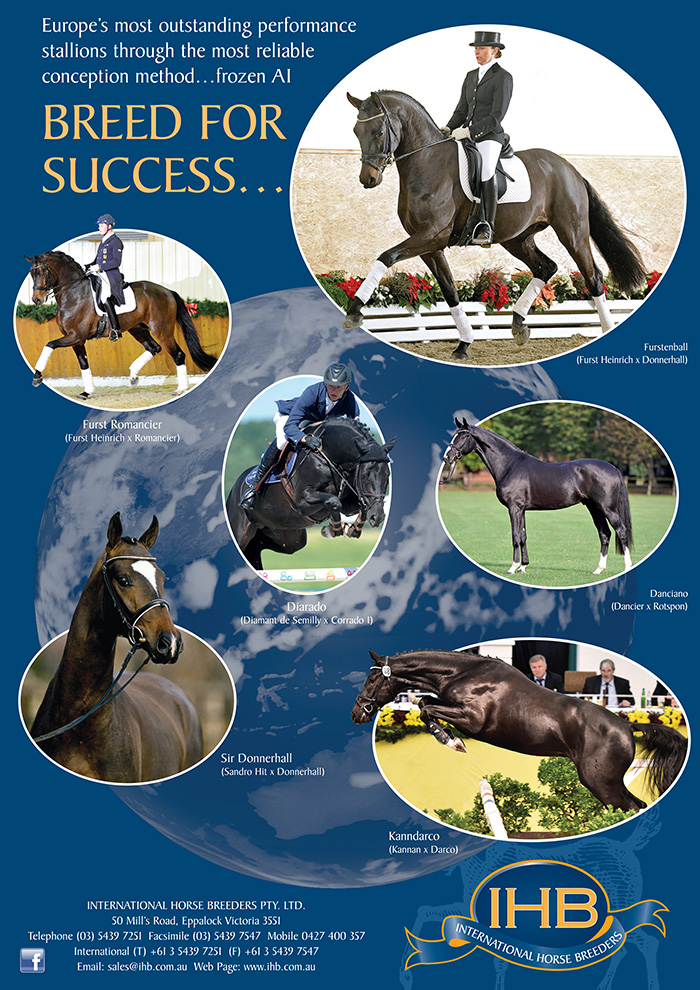
Emma gently, with a little cluck, asks Harlem to move forward for her. But as the aid was nice and soft, the message did not quite make its point with Harlem.
Steffen: “Ok so how was the reaction there?”
Emma: “He did make a reaction, but it wasn’t as I wanted the reaction to be.”
Steffen: “So I think what I would have done right there, instead of bringing him back to the walk and repeating it, I think I would have pushed him forward and if he had picked up a canter, no problem. I want to make an impact.”
Emma: “So is it better to have the wrong reaction than no reaction?”
Steffen: “It is better Emma to get a bad reaction, than no reaction. So let’s create awareness, we want him aware of you. We love it that he’s relaxed, but when you pick up the contact there should be equal respect, you respect him right… so ask him to respect you, so let’s see if we can get a good reaction to the leg. Lets pick up the trot, and forward.”
Emma, with conviction asks again more firmly this time. Harlem answers with a bit of a buck… and moves on nicely forward, not rushing, not nervous, just nice and steady.
Steffen: ”Okay that’s fine he is entitled to an opinion, I don’t mind that. Push him on, he must respect your leg.”
Little buck and then again nicely forward…
Steffen: “Okay, better, and again please… push him on for three strides… good… and again.”
Buck, buck, buck – now that’s not something you usually see in a Master Class – and trotting forward beautifully.
Steffen: “Good Emma, push him forward, good. That’s okay buddy you can have an opinion but you must respect the leg – not respecting the leg is not negotiable!”
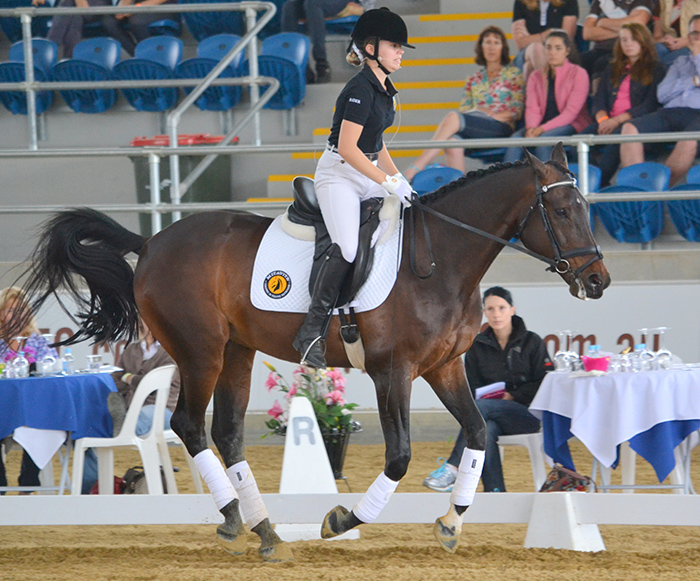
Harlem voicing his opinion of the leg aid…
And so set the stage for Harlem’s answer to most of the leg aids for the next ten or so minutes – he’d voice his opinion then comply in a nice straightforward manner. To be fair these were not large life-threatening bucks, dangerous behaviour is not part of responsible riding, but they were somewhat unseating and given that Emma was riding in front of an audience under the direction of the great Steffen Peters, Emma would be forgiven for maybe feeling a little embarrassed. But here is the point and it’s a salient one: Emma and Harlem represent roughly 85 per cent of the riding public in Australia. Harlem had effectively ‘trained’ Emma by having an ‘opinion’ about how he wanted to be ridden. This meant Emma rode Harlem in his comfort zone and without the required energy. Harlem was now being asked to work on Emma’s terms, and not his. The rules of the game were changing and he had an ‘opinion’ on the matter.
Story continues below the advertisement
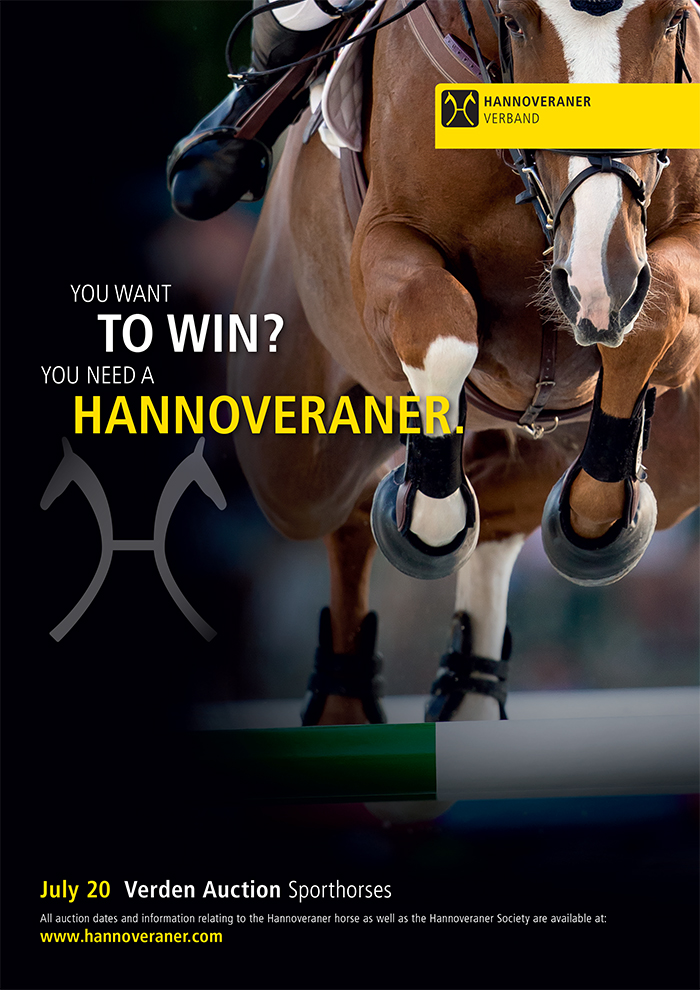
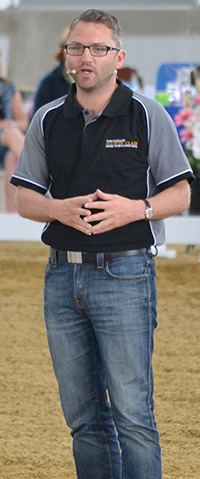
Jonah on Focus & Priorities
“So many athletes I work with tell me they are still working on the same thing six months or even a year later. For example they might say, I’m still working on my posture. I thought we had that conversation a year ago, why is it still an issue? Well it really comes down to focus. I use a lot of analogies in my work and one I’d like to share with you is that if I had a sniper with a rifle sitting in the judge’s box, with a laser focused on your chest and I said to you: ‘Emma, the one thing you have to remember is to sit up straight. Then if I gave the sniper the instruction that it doesn’t matter if Emma makes errors, but if her posture slumps just shoot her.’ Well, I may be wrong, but somehow I think you might just make it a priority to keep your posture correct. What I am saying is we actually have to have that degree of priority when we train. If you truly focus on your training priority and do it repeatedly, then it becomes sub-conscious, but you’ve got to value it.”
Steffen was now challenging Emma to actively raise her training standards, to actively have Harlem forward of the leg, using a soft leg aid that will increase his rideability. Emma wore no spurs and did not use the whip to reinforce the leg aid.
Steffen: “I don’t believe the whip to be a driving aid. I like to use it to actively engage the hind legs, sometimes even a little tap on the croup when you want to engage both hind legs.”
To Emma’s enormous credit, she retained her composure and remained calm and task-focused, concentrating on increasing the response to her leg aid. Jonah had an important point to make in this regard;
“This is a perfect opportunity to talk about errors and mistakes. I have to say and without knowing you that well, the horse behaving the way he was, you might have got quite frustrated and viewed this training session as a bad session, whereas what has been given here are some clear parameters. Don’t worry about the ‘other stuff’, that’s just an error, not a mistake. A mistake is not doing anything about a situation, not having standards, not communicating them”.
Steffen – “Emma you are good enough of a rider already to analyse if the feeling is correct. If the horse goes a lot more motivated and forward for you, that is the correct feeling. If the horse gets softer and responds to a tiny squeeze into the rein, instead of going against the rein, then that’s the right feeling. The priorities are simple at the moment, nice and forward and raise the training to that standard.”
As the three-day master class progressed so did Harlem’s energy, rhythm, relaxation and connection. I asked Emma if she could condense the take-home message?
“Remember to maintain my standard as a rider, communicating clearly and effectively with my horse every day.”
A wonderful take-home message for all riders to remember: that good training can make the average horse extraordinary.
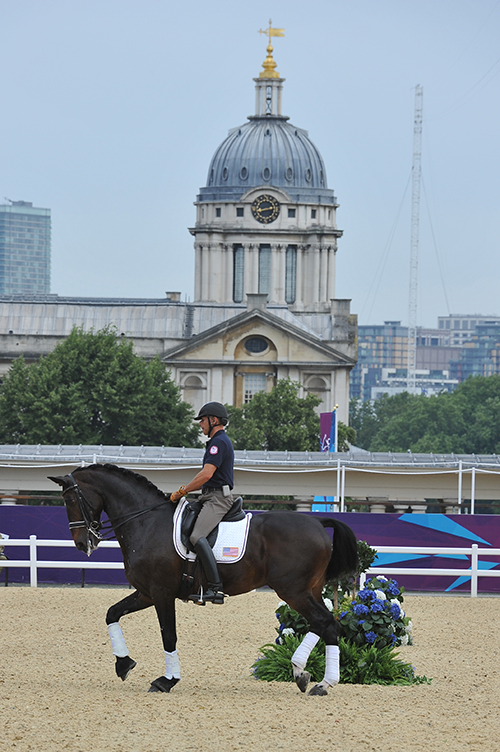
Steffen on training leading up to the London Olympics
“We were asked to write a letter to ourselves and open it on the day of our Olympic performance. I wrote down “this is it, believe in yourself, stay true to yourself and your horse” – and that is exactly what I did. We had a very good plan but it was always intended with the best horsemanship and utmost respect to the horse and that’s how we trained. On days when I felt, that’s good enough after half an hour, I left it that way. Was this sometimes to the frustration of our coach? You bet, but I wanted to stay true to myself, true to my horse and not say ‘well it’s the Olympic games let’s just step it up a bit.’ I stuck to my routine and that worked out beautifully in the Grand Prix and Grand Prix Special. Unfortunately we made a few errors in the Grand Prix Freestyle, but it still was a wonderful learning experience. Did we do well enough? No. I have no problem admitting that, but the wonderful thing was that we, pretty much immediately afterwards, came up with a plan for the next four years and I really think we can do better.”
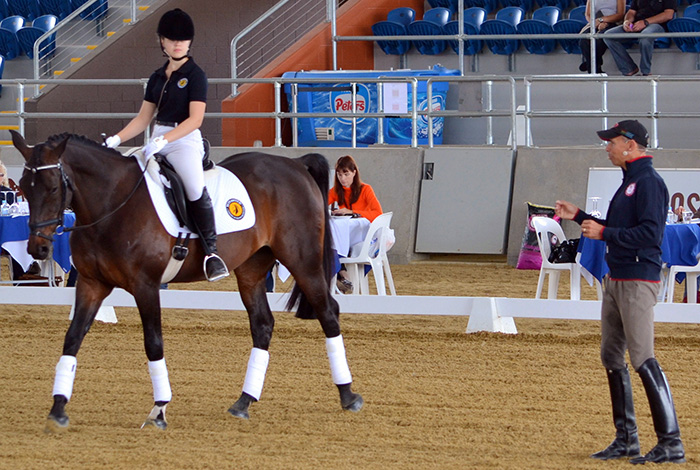
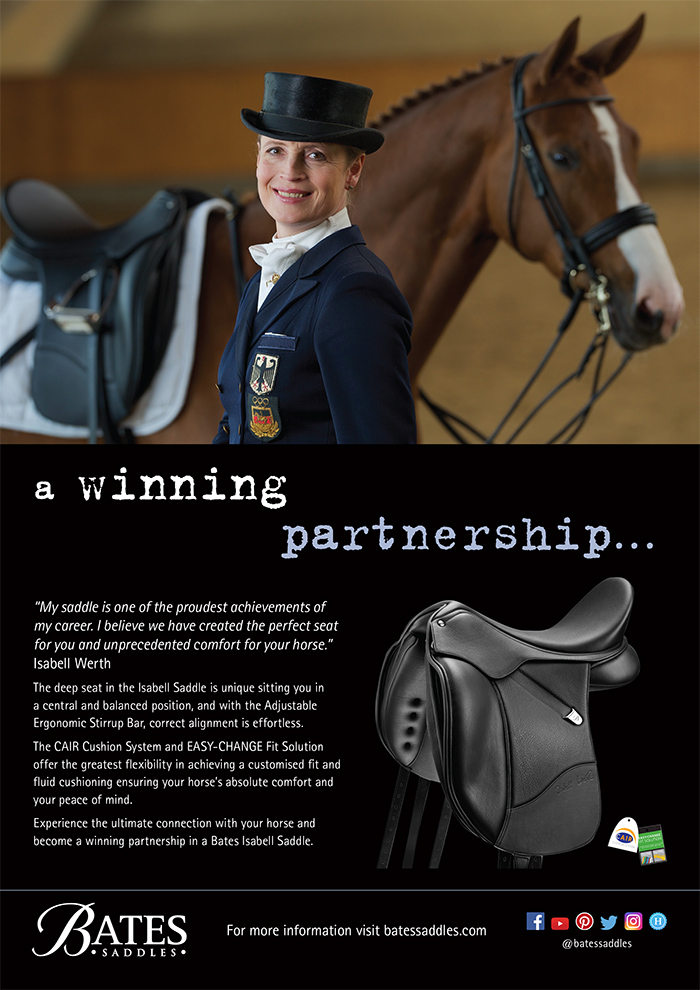


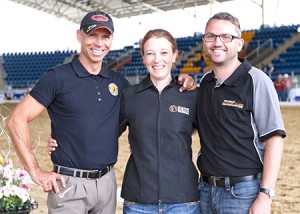
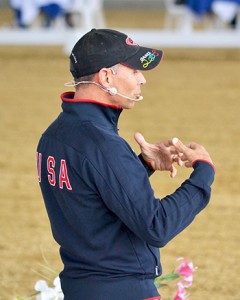
Wonderful article! I’d have loved to have seen more reporting from this clinic, great writing and photos as always <3
It’s also so lovely to see a horse and rider in the clinic who are representative of the majority instead of only the best upper level combinations. Kudos to this young rider!
your wish is granted over the next few weeks all seven parts will appear right here…